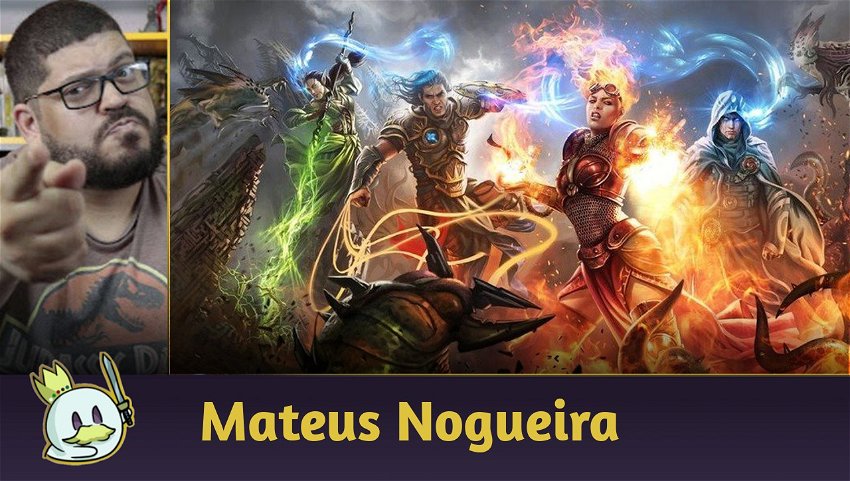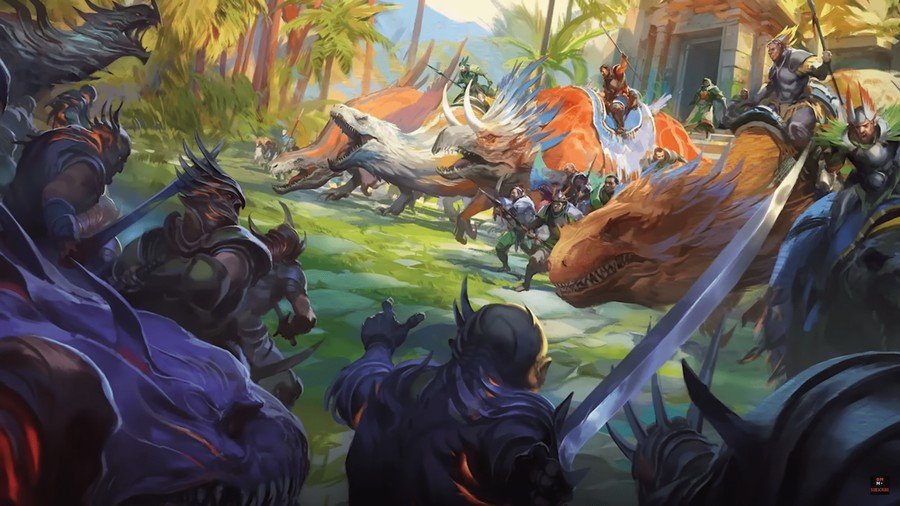Introduction
On March 15th, Wizards made an announcement that, I believe, absolutely nobody expected: Oathbreaker became an official MTG format!
For those who don't remember, Oathbreaker is a format created in 2017 by the Weirdcards Charitable Club, which remains the Oathbreaker committee. That is, it is not Wizards who defined or will define the guidelines and banlist of the format.
But what is this format anyway?
Oathbreaker's Rules
Oathbreaker is a casual multiplayer format whose main differential for Commander is the presence of Planeswalkers in the Command Zone, something that the Commander rules committee has always been afraid to allow in the format and that a portion of the community has always asked for. Here, the commander is called an Oathbreaker and is exclusively a Planeswalker.
In addition, the Command Zone has another essential difference: the Signature Spell. You have a Sorcery or Instant from your commander's color identity. You need your Oathbreaker on the battlefield to cast your Signature Spell, and it can't be put into any zone other than Command Zone, so you can't put it into your hand, graveyard, exile, or library. Additionally, both follow the commander tax rules, costing 
A curious observation is that Oathbreakers with Partner can have a Signature Spell for each of the partners, as long as they follow their color identity. Yes, you can start with 4 more cards available. Currently, we have options like Tevesh Szat, Doom of Fools & Jeska, Thrice Reborn and Will Kenrith & Rowan Kenrith.
Your deck must contain exactly 60 cards (including the Oathbreaker and Signature Spell). Also, this is a singleton format, meaning you can own only one copy of each card, except for basic lands and spells that explicitly state in their text that you can own multiple copies (like Rat Colony, Dragon's Approach and Seven Dwarves). You cannot use a Companion as 61st card, which is another difference for Commander.
Finally, each player starts with 20 life points, which is a huge difference compared to other multiplayer formats. According to the committee, life at this value is justified for proposing games that last 30 to 60 minutes, and also because part of the attacks and damage will be directed at the Oathbreakers. It is also worth remembering that there is no commander damage in this format.
Banned Cards
The Philosophy Behind Bans
There are a few principles that guide format bans that may be important to keep in mind, so you don't get frustrated with Oathbreaker. At its core, the format rests on these pillars: multiplayer, casual, friendly, interactive, memorable, fast, and focused on Planeswalkers.
To have its ban considered, a card must fit one of these profiles:
• Extreme mana accelerators (Example: Sol Ring, Dark Ritual and Tolarian Academy);
• Sorceries and Instants that win the game without much effort. (Example: Doomsday, Ad Nauseam and Tooth and Nail) ;
• Planeswalkers that work exceptionally well as an Oathbreaker. (Example: Saheeli, the Gifted);
• Cards that lead to stagnant game states. (Example: Upheaval, Shahrazad, and Limited Resources).
Also, normally, cards will only be banned after 90 days of their release, given enough time to be tested and the Metagame to adapt. The ban candidate will be reviewed by the Rules Committee playgroup and if it proves to be a problem in games in that group, it will be voted on to decide its fate.
Of all the above points, I would like to highlight the fact that Oathbreaker is fundamentally a casual format, just like Commander.
In both formats, discussion between players is prioritized to align expectations. And of course, fun is completely subjective.
If you adopt a more competitive stance, be fully aware that the format is potentially unbalanced and broken by being an Eternal format and having virtually the entire Magic pool available. Precisely because it carries its bans from a casual point of view, there will hardly be balance adjustments in this regard.
Banned Card List
Banned cards as of the publication date of this article:
• Cards with the type "Conspiracy". Click here to see the full list.
• Cards that reference “Ante”. Click here to see the full list.
• Cards that reference "playing with ante". Click here to see the full list.
• Cards with a silver border or a holographic acorn symbol.
• Balance
• Channel
• Cleanse
• Crusade
• Doomsday
• Fastbond
• Imprison
• Jihad
• Mox Jet
• Mox Ruby
• Sol Ring
• Tinker
• Upheaval
Decklists
There is no ready formula to build decks, it all depends on your game plan, archetype and power level you are playing. In a lower power level, fun environment and with heavy spells, I believe it is important to have between 20 and 24 lands and good mana accelerators for heavier plays. If you play at optimized power level, the curve will tend to be very low, with the best accelerators, compact combos and somewhere between 16 and 20 lands at most.
Next, I separated 4 decks for beginners (proposed by the committee itself) and 4 decks for those who want to test the maximum potential of the format in terms of power level. Finally, some potential Oathbreakers and their Signature Spells that can also be obscenely strong.
Decklists for Beginners
These are lists proposed by the Rules Committee as Starter Decks of 2022, their financial value is affordable, and I believe they are balanced lists to start playing in casual games. It is worth remembering that despite the name, these aren't a product released by Wizards and the company doesn't intend to launch products aimed at Oathbreaker.
Chandra, Flamecaller & Chandra's Triumph
Gideon, Champion of Justice & Gideon's Triumph
Jace, Mirror Mage & Jace's Triumph
Nissa of Shadowed Boughs and & Nissa's Triumph
Competitive Decklists
Leaving the good neighborhood, we arrived at the dark alley. The following are lists on the competitive and potentially broken Oathbreaker spectrum.
Remember: the format is potentially unbalanced and broken because it is an Eternal format and the banlist being driven by the casual point of view. Don't use these lists below at casual tables.
Tyvar, Jubilant Brawler & Green Sun's Zenith
Tamiyo, Field Researcher & Flash
Oko, Thief of Crowns & Flash
Jeska & Jeska's Will and Tevesh & The Elderspell
Other High-Power Level Combinations
Still want to see more broken options? I'll leave some ideas for the deckbuilders out there.







(Yes, Shorikai, for now, can be your Oathbreaker)
Conclusion
This is Oathbreaker, the new format made official by Wizards. A new way to play multiplayer Magic with a spotlight on the iconic Planeswalkers. Do you think the format will succeed, or is it doomed to oblivion? Is your deckbuilding spirit excited? Leave your comment with your opinions!
If you want to check the format's future updates on the official website, just here.
Until next time!














— Comentarios 0
, Reacciones 1
Se el primero en comentar